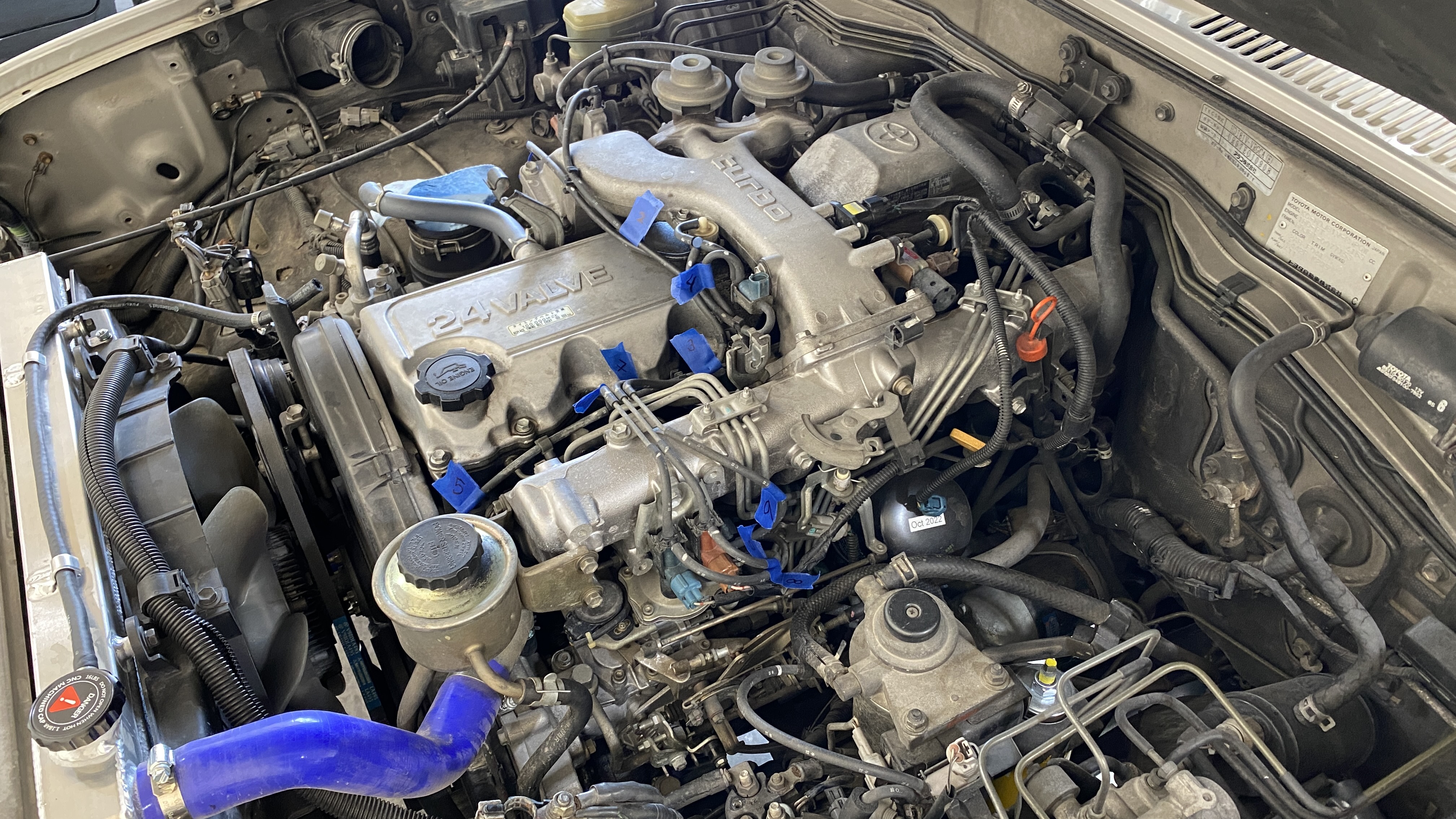Did you ever figure out how the JDM EGR-Equipped 1HD-FT handles altitude compensation?Looking for knowledge on BACS and SICS. Currently cleaning up and simplifying my engine bay.
If I understand it correctly, I'd like to
1. Remove the solenoid for SICS and connect that directly to vacuum, for constant vacuum.
2. Remove the solenoid for BACS and either connect that to vacuum or run to atmosphere.
Questions:
- My 1HDFT JDM spec with EGR has no manual diaphragm for BACS. How does it sense the altitude? Is there a pressure switch inside the orange solenoid?

- I live at about 6000' and mostly travel/wheel from 4000 - 10000'. Would it be beneficial to hook up BACS to constant vacuum so that it's always "on"?
- OR am i overthinking it and should I just leave the stock setup? I'd love to simplify if possible.
Thanks
I just went through the EGR delete and vacuum simplification. I have vacuum routed to the BACS port on the fuel pump, constantly pulling the aneroid pin down. I thought about retrofitting the High Altitude Compensator diaphragm (25709-17030) but it's NLA. Alternatively, I could rig a manual VSV switch or yank the vacuum line if I am over fueled at higher altitudes, but I want this to be a passive system not needing to be fussed with.
If the EGR computer was handling it, it won't work anymore after I pulled the pins and disabled it. Now IF the EGR computer handles altitude compensation, I would consider reconnecting it and figuring a way to keep the error codes from constantly triggering the dash light.
